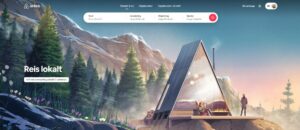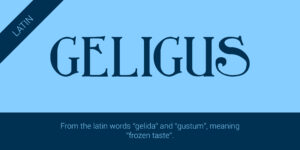Visit a popular store, like an Apple reseller, Nike, Levi’s, H&M or Ikea. The brand should be well-known and you must visit a shop where their products are being displayed or distributed. In smaller towns you may not have access to these stores, in this case you will need to find a section showcasing these items and view how they are displayed or laid out. Before going to the shop, determine the following about their brand identity and, once at the shop, evaluate how they remain true to their brand identity or how they do not. How is the brand identity enhanced (or perhaps, not expressed) at the point of customer interaction? Hand in a write-up with photos of the following:
Before reading this lesson task, I just want to inform that I live 1,5 hour drive away from the nearest city (which is Bodø), and that I didn’t have the opportunity to visit a popular store or warehouse. I visited my local grocery store and found a Coca-Cola display in the middle of the store, which I thought would fit this task very well since Coca-Cola is one of the biggest brands in the world.
1. What brand identity element are they using in their logo (e.g. abstract mark or word mark)?
Coca-Colas logo is only a word mark, but it is still a unique and recognizable logo that has been around since the late 1800’s. Coca-Colas accountant, Frank Robinson, came up with the name “Coca-Cola”, and thought that the two Cs would look good in commercials and also drew the well-known logo. In my opinion, he couldn’t be more right, the logo is still in use today, and is in 2020 the 6th most valuable brand in the world according to Forbes. In 1893 Coca-Cola registered their logo in Spencerian-font as a registered trade mark at U.S. Patent Office.

2. What do you think their brand ideal is?
I think Coca-Colas brand ideal has do to with emotions and associations, since their many slogans are mostly about it. For example, they have had (and still has) the slogans “Taste the feeling” and “Open happiness”. They also play a big role when it is Christmas, because they use Santa Claus to advertise Coca-Cola. The “modern” Santa Claus with the white beard and red clothes was actually created by Coca-Cola in 1931 to make associations between Coca-Cola and Christmas. I think they really nailed it, since this is still a huge part of their marketing.

3. How do they remain true to their brand ideal within their shops?
In an earlier blog post, I wrote about McDonald’s and how they combined their menus with free Coca-Cola glasses. I think this is one of the many ways that Coca-Cola reaches out to people and offer them an experience and satisfies the emotional needs of the customers. For example, I really love the Coca-Cola glasses and have a few myself that I have gotten from McDonald’s during Fifa World Cup. The funny thing is, I am not a Coke-drinker at all. I drink Pepsi Max, but really love drinking it from the Coca-Cola glass.

Coca-Cola sell their beverages in supermarkets, restaurants, bars etc. all over the world. To remain true to their brand ideal where the products are sold, they have to come up with simple but clever solutions. They have had many campaigns over the year, and one that I remember specifically is when they added names to the labels of the Coca-Cola bottles. By doing this, people (whether they were Coca-Cola drinkers or not) would look for their own name on the bottle and buy it because it felt unique. In this way, Coca-Cola stayed true to their brand ideal when it comes to emotion. This was also a clever way to market Coca-Cola from small gas stations to bigger supermarkets all over the world. This marketing campaign was called “Share a coke”. Coca-Cola describes the campaign like this:
4. Evaluate the customer experience according to the brand ideal. (For example, if the brand ideal is “innovation”, do you get a sense of that ideal when you visit the outlet?)

When I visited my local grocery store and found the Coca-Cola stand, the first thing I noticed was the wooden pattern on the stand. It felt warm, cozy and rustic, and reminded me of a typical old Norwegian cabin in the woods. It also had the Coca-Cola logo with a crackle effect and the text “Taste the Feeling” underneath. Then I noticed the label of the Coca-Cola bottles that was displayed. They had the famous Santa Claus on it drinking from a Coca-Cola bottle with the text “The Original Taste of Christmas”. I really got the sense of happiness, cozy Christmas and family time when I looked at the stand, and visualized a vintage kind of Christmas in a cozy cabin. In other words, Coca-Cola really lives up to their brand ideal regarding emotions and happiness, either it’s in a supermarket in a big city, or in a small grocery store in the countryside.



Sources:
Question 1:
https://www.coca-cola.no/om-oss/historie/1880s
https://www.coca-cola.no/om-oss/historie/1890s
https://www.forbes.com/the-worlds-most-valuable-brands/#36f0f93c119c
Image source: https://upload.wikimedia.org/wikipedia/commons/thumb/c/ce/Coca-Cola_logo.svg/1280px-Coca-Cola_logo.svg.png
Question 2:
https://www.coca-cola.no/om-oss/historie/1930s
Image source: https://www.coca-cola.no/om-oss/historie
Question 3:
https://www.coca-colacompany.com/au/faqs/what-was-the-share-a-coke-campaign
Image source: https://www.thedrum.com/news/2014/01/28/case-study-what-share-coke-campaign-can-teach-other-brands#&gid=1&pid=1
Question 4:
All images are taken by me (Malin Steffen Berg)



